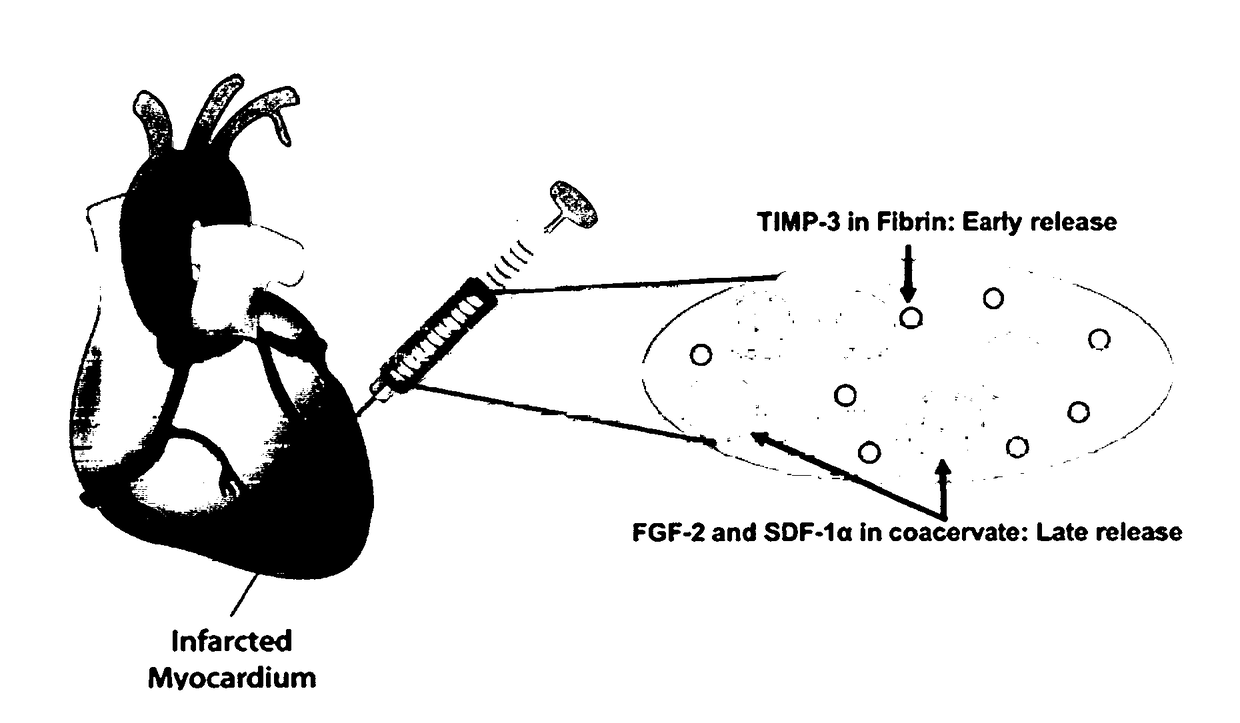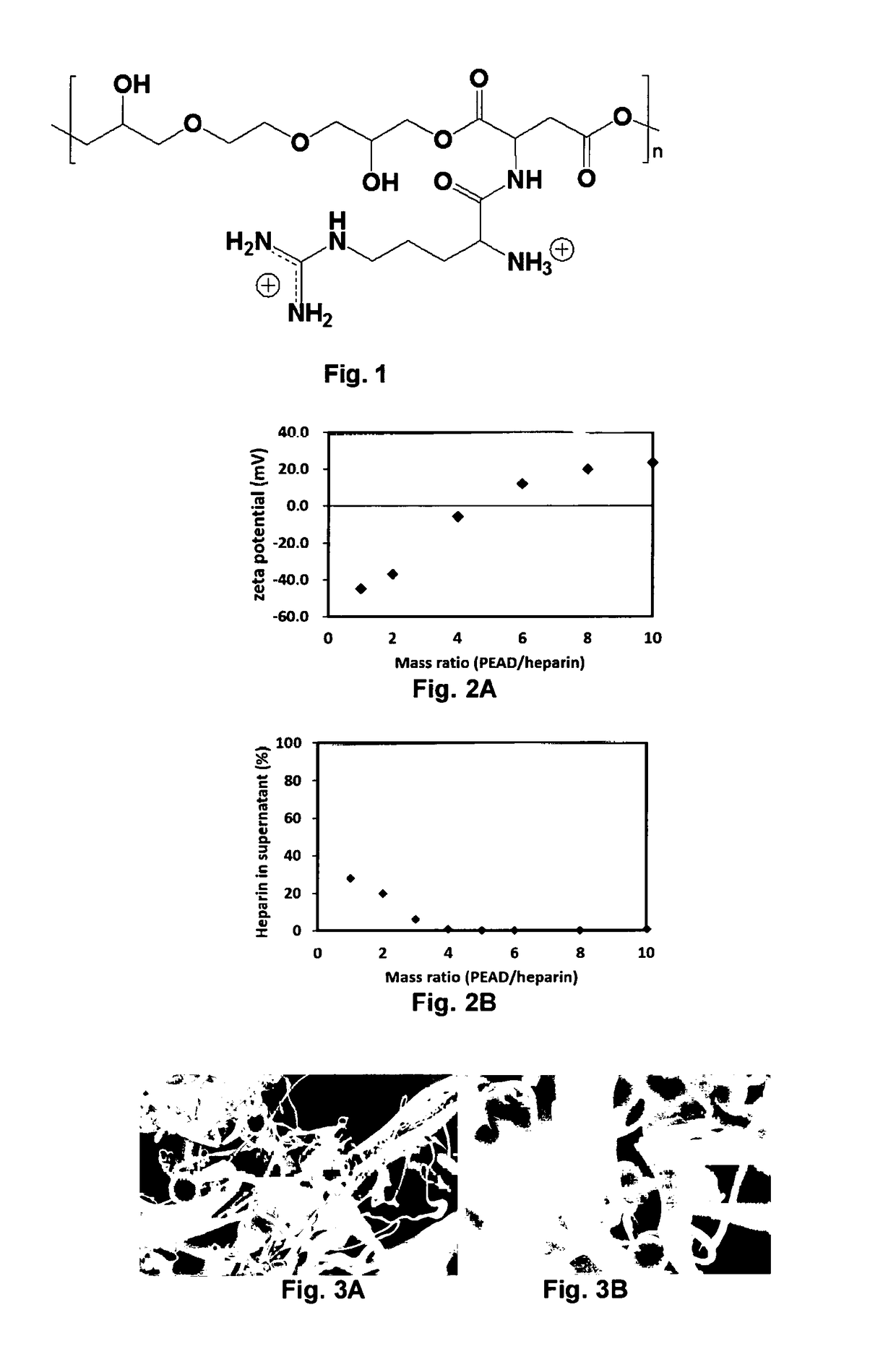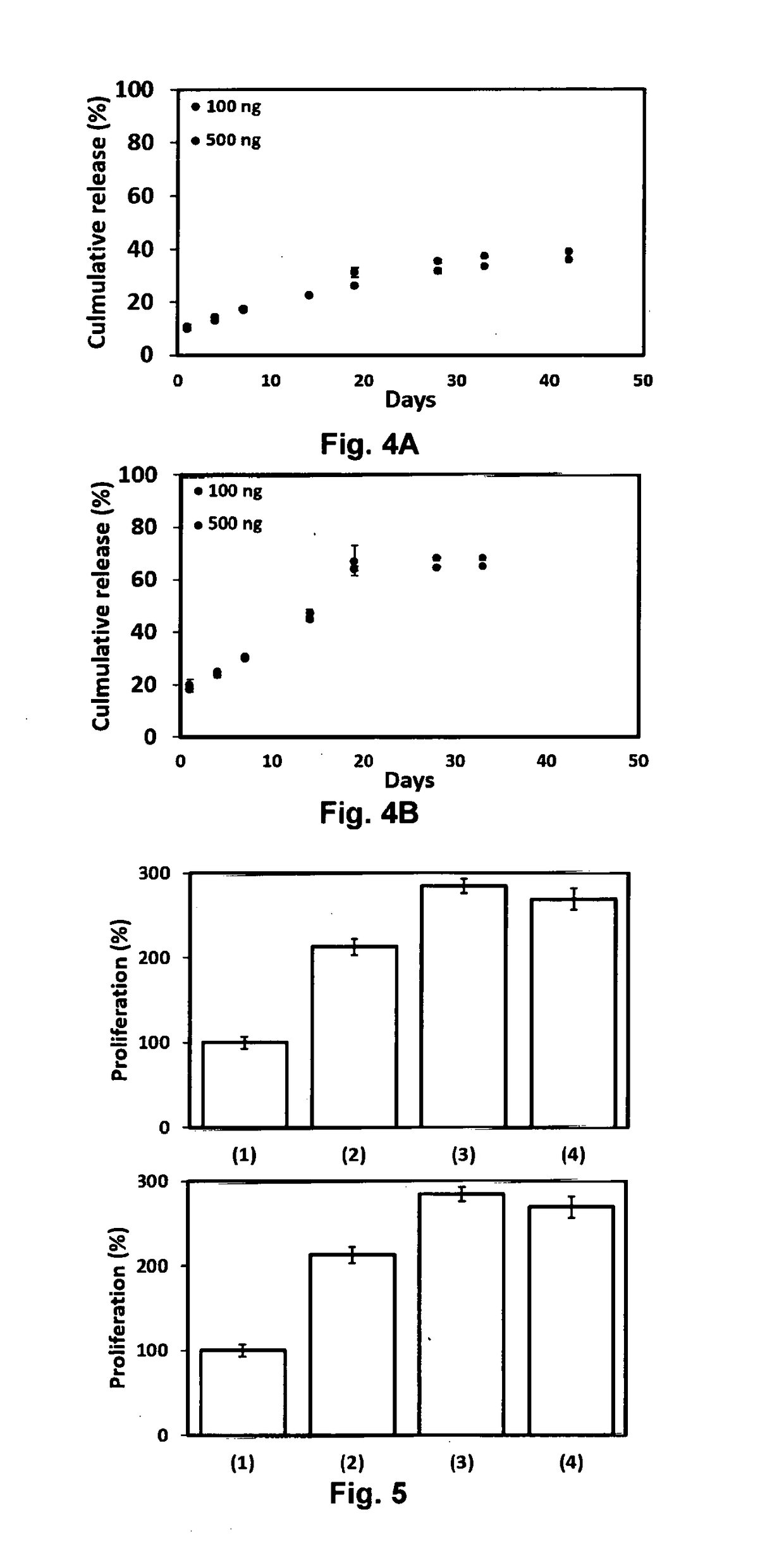Spatiotemporal Delivery Vehicle and Related Methods
- Summary
- Abstract
- Description
- Claims
- Application Information
AI Technical Summary
Benefits of technology
Problems solved by technology
Method used
Image
Examples
example 1
atible Heparin-Binding Polycation as a Growth Factor Delivery Vehicle
Methods
Synthesis of PEAD—
[0080]t-BOC protected aspartic acid (t-BOC Asp), t-BOC protected arginine (t-BOC-Arg) (EMD Chemicals, NJ), ethylene glycol diglycidyl ether (EGDE), trifluoroacetic acid (TFA) (TCI America, OR), anhydrous 1,4-dioxane and tetra-n-butylammonium bromide (TBAB) (Acros organics, Geel, Belgium), dicyclohexylcarbodiimide (DCC), N-hydroxysuccinimide (NHS) (Alfa Aesar, MA) and 4-dimethylaminopyridine (DMAP) (Avocado Research Chemicals Ltd, Lancaster, UK) were used for PEAD synthesis without purification.
[0081]The synthesis of PEAD was performed as follows. EGDE and t-BOC Asp were polymerized in 1,4-dioxane under the catalysis of TBAB. t-BOC protection was later removed by TFA to generate primary amine. t-BOC-Arg was conjugated by DCC / NHS / DMAP coupling followed by the second deprotection to yield PEAD. The chemical structure was confirmed using NMR and FT-IR. The molecular weight of PEAD was measured ...
example 2
nt of Angiogenesis and Vascular Maturity Via an Injectable Delivery Matrix
Materials and Methods
Synthesis of PEAD—
[0100]PEAD was synthesized essentially as described in Example 1. The chemical structure was characterized using an UltraShield Plus 600 NMR (Bruker BioSpin) and a Nicolet iS10 spectrometer (Thermo Fisher Scientific).
Delivery Vehicle Preparation and Scanning Electron Microscopy—
[0101]For preparation of the delivery vehicle, PEAD dissolved in the deionized water was mixed with heparin solution under the stirring condition. The complex was dropped on an aluminum stub, lyophilized, sputtered with gold, and the morphology was viewed with a Jeol 9335 field emission gun SEM (Jeol).
Western Blotting—
[0102]Both PEAD and heparin were dissolve in normal saline (0.9% NaCl(aq)) to prepare the concentration of 10 mg / ml. For preparation of the delivery matrix, 500 ng of FGF-2 was first mixed with 10 μl of heparin solution and then 50 μl of PEAD solution. 20× of normal saline and deioniz...
example 3
[0119]During angiogenesis, vascular endothelial growth factor (VEGF) is required early to initiate neovessel formation while platelet-derived growth factor (PDGF-BB) is needed later to stabilize the neovessels. The spatiotemporal delivery of multiple bioactive growth factors involved in angiogenesis, in a close mimic to physiological cues, holds great potential to treat ischemic diseases. To achieve sequential release of VEGF and PDGF, VEGF was embedded in a fibrin gel and PDGF in a heparin-based coacervate that is distributed in the same fibrin gel. In vitro, we show the benefits of this controlled delivery approach on cell proliferation, chemotaxis, and capillary formation. A rat myocardial infarction (MI) model demonstrated the effectiveness of this delivery system in improving cardiac function, ventricular wall thickness, angiogenesis, cardiac muscle survival, and reducing fibrosis and inflammation in the infarct zone compared to saline, empty vehicle, and free growth factors. C...
PUM
| Property | Measurement | Unit |
|---|---|---|
| Zeta potential | aaaaa | aaaaa |
| Mass | aaaaa | aaaaa |
| Mass | aaaaa | aaaaa |
Abstract
Description
Claims
Application Information
 Login to View More
Login to View More - R&D
- Intellectual Property
- Life Sciences
- Materials
- Tech Scout
- Unparalleled Data Quality
- Higher Quality Content
- 60% Fewer Hallucinations
Browse by: Latest US Patents, China's latest patents, Technical Efficacy Thesaurus, Application Domain, Technology Topic, Popular Technical Reports.
© 2025 PatSnap. All rights reserved.Legal|Privacy policy|Modern Slavery Act Transparency Statement|Sitemap|About US| Contact US: help@patsnap.com



